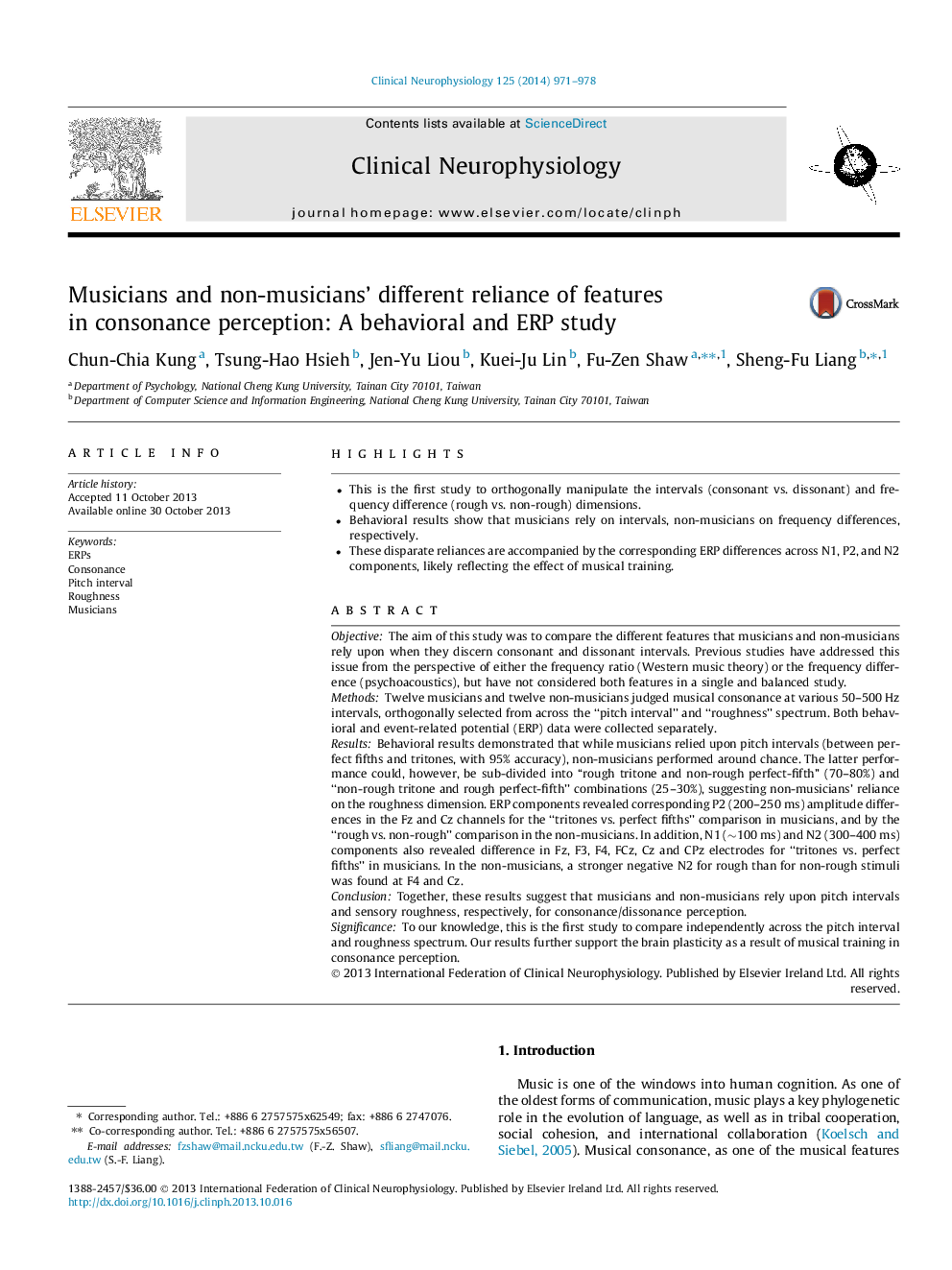| کد مقاله | کد نشریه | سال انتشار | مقاله انگلیسی | نسخه تمام متن |
|---|---|---|---|---|
| 3044081 | 1184992 | 2014 | 8 صفحه PDF | دانلود رایگان |

• This is the first study to orthogonally manipulate the intervals (consonant vs. dissonant) and frequency difference (rough vs. non-rough) dimensions.
• Behavioral results show that musicians rely on intervals, non-musicians on frequency differences, respectively.
• These disparate reliances are accompanied by the corresponding ERP differences across N1, P2, and N2 components, likely reflecting the effect of musical training.
ObjectiveThe aim of this study was to compare the different features that musicians and non-musicians rely upon when they discern consonant and dissonant intervals. Previous studies have addressed this issue from the perspective of either the frequency ratio (Western music theory) or the frequency difference (psychoacoustics), but have not considered both features in a single and balanced study.MethodsTwelve musicians and twelve non-musicians judged musical consonance at various 50–500 Hz intervals, orthogonally selected from across the “pitch interval” and “roughness” spectrum. Both behavioral and event-related potential (ERP) data were collected separately.ResultsBehavioral results demonstrated that while musicians relied upon pitch intervals (between perfect fifths and tritones, with 95% accuracy), non-musicians performed around chance. The latter performance could, however, be sub-divided into “rough tritone and non-rough perfect-fifth” (70–80%) and “non-rough tritone and rough perfect-fifth” combinations (25–30%), suggesting non-musicians’ reliance on the roughness dimension. ERP components revealed corresponding P2 (200–250 ms) amplitude differences in the Fz and Cz channels for the “tritones vs. perfect fifths” comparison in musicians, and by the “rough vs. non-rough” comparison in the non-musicians. In addition, N1 (∼100 ms) and N2 (300–400 ms) components also revealed difference in Fz, F3, F4, FCz, Cz and CPz electrodes for “tritones vs. perfect fifths” in musicians. In the non-musicians, a stronger negative N2 for rough than for non-rough stimuli was found at F4 and Cz.ConclusionTogether, these results suggest that musicians and non-musicians rely upon pitch intervals and sensory roughness, respectively, for consonance/dissonance perception.SignificanceTo our knowledge, this is the first study to compare independently across the pitch interval and roughness spectrum. Our results further support the brain plasticity as a result of musical training in consonance perception.
Journal: Clinical Neurophysiology - Volume 125, Issue 5, May 2014, Pages 971–978